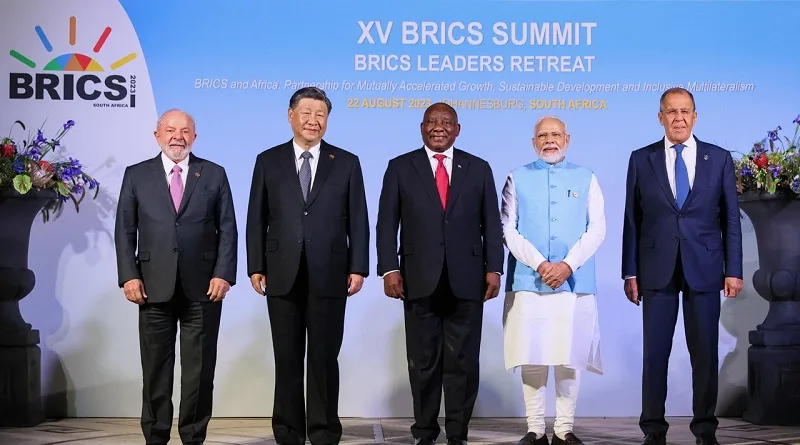Another BRICS in the Swirl
“We don’t need no expansion, we don’t need no #dedollarization, we don’t need no thought control!,” to paraphrase the cult student protest song by Pink Floyd as some big guns appear lukewarm towards the key agenda items of the XV #BRICS Summit taking place in Sandton from 22 to 24 August 2023.
The unexpected absence of Chinese Xi during the opening session and his impromptu substitution by the Chinese Minister of Commerce had tongues wagging as the Chinese authorities dilly dally to issue an official communiqué. In the same vein, the physical presence of Russian Vladimir Putin was the subject of speculation for months prior to the holding of the event before South Africa and Russia ‘mutually agreed’ on a virtual solution. The fact that French President Macron attempted to invite himself to the meeting also gave rise to some comical situation.
Beyond the rumor mill, the 15th BRICS Summit (#BRICS2023) is actually the first in-person leaders meeting following a hiatus caused by the #COVID pandemic and was hailed as heralding a fresh new start for the grouping. The BRICS is perceived as the ‘alternative center’ which could potentially provide leadership to the emerging economies and to give voice to the developing countries who are not too happy about the Bretton Woods Institutions.

The BRICS combined #GDP represents about a quarter of the global #GDP and recently exceeded that of G7 in 2023. The five countries, with giants India and China each contributing more than one billion people, account for 42% of the world population. BRICS represents 17% of global commerce and covers nearly 27% of the earth’s land surface. Therefore, it seems quite legitimate for #BRICS to aspire to a higher position within the world pecking order.
With a push for expansion, BRICS seems to have all the attributes to evolve as the go-to platform for the #GlobalSouth. However, India expressed reserves about BRICS being dominated by China, with which it entertains a complicated love-hate relationship. Indeed, China is the elephant in the room, weighing in at nearly $18 trillion in GDP while India has close to $4 trillion in GDP. Thus, India has called for the definition of ‘clear criteria and mechanisms’ before admitting new members beyond the ‘shared vision and values’ cliché.
With regards to #dedollarization, cracks have also appeared with Russia, Brazil and China willing to go all the way with a new BRICS currency while India and South Africa appear more circumspect by pushing for bilateral trade using respective local currencies. Nevertheless, Indian PM Narendra Modi promoted the Indian Digital Payment System, called Unified Payments Interface (#UPI), in his remarks at the opening session of BRICS.

Whether #dedollarization is a go or no-go, the existing and eventual new member states expect the BRICS Bank or New Development Bank (NDB) to play a pivotal role that is closer to their needs and aspirations as opposed to the World Bank and International Monetary Fund (IMF). In line with the fight against #ClimateChange, the NDB has started to issue #GreenBonds denominated in the local currencies of its stakeholder countries.
China has wisely stayed away from controversial issues, at least publicly, and pushed for industrialization rather than infrastructure in line with the wish of African countries to move up the Global Value Chain (#GVC). South African President Cyril Ramaphosa also delved lengthily on the aspirations of African countries to promote Local Value Addition (#LVA) and called for African countries not to miss the boat brought about by the #GreenTransition through #LocalBeneficiation of #CriticalMinerals.
The question of expansion will be discussed behind closed doors during the Leaders’ Retreat. Already, a couple of dozens of countries have applied to join the club, a telltale sign of a new world order in gestation. As we enter a new era of #multipolarity, the writing is on the #BRICS wall.

